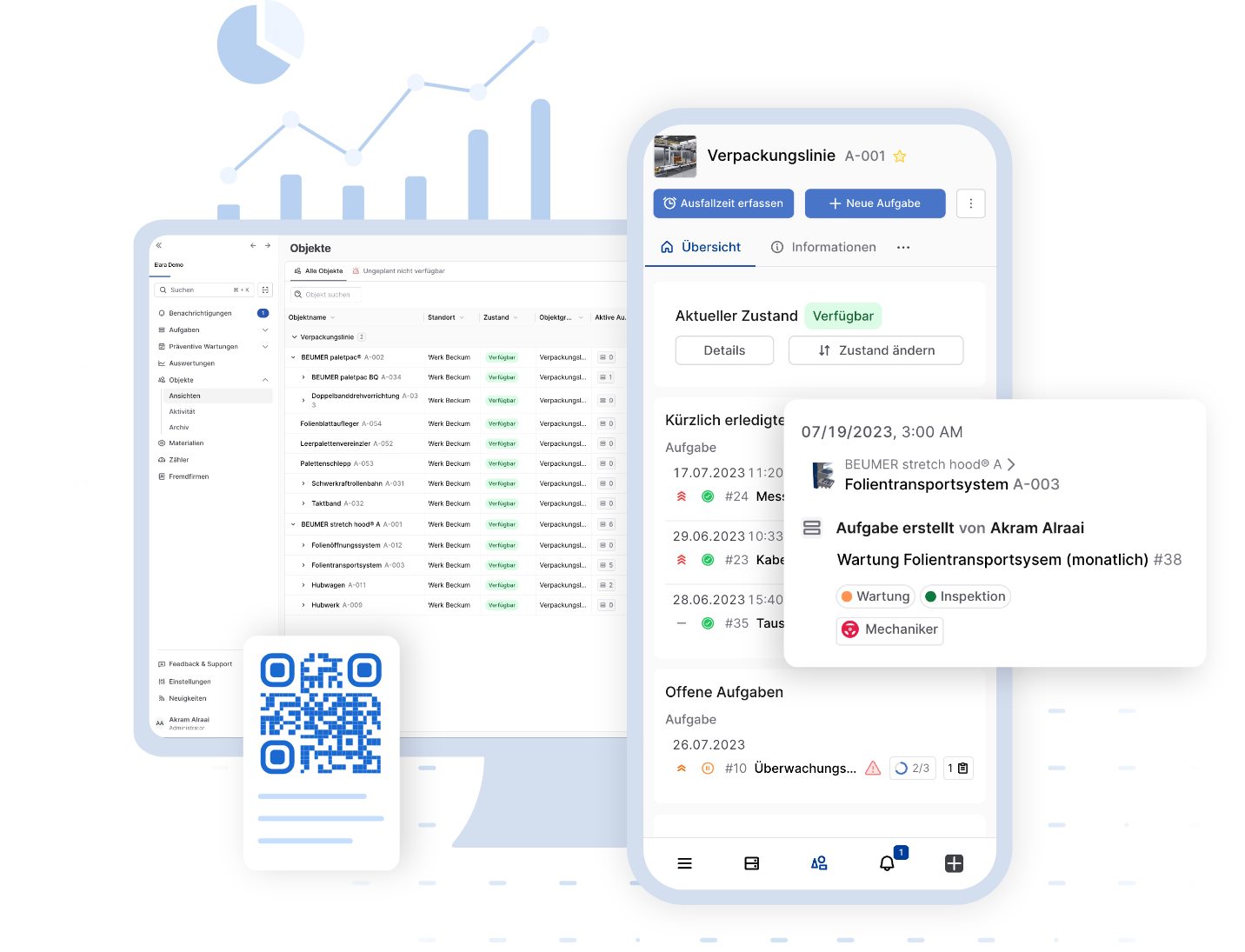Description: The Internet of Things and advanced analytics have enabled predictive maintenance to leap forward. How do you go about it? Here are some useful tips. Predictive Maintenance [...]

Description: The Internet of Things and advanced analytics have enabled predictive maintenance to leap forward. How do you go about it? Here are some useful tips.
Predictive Maintenance in 2023: A checklist for getting up to speed quickly
Preventive maintenance is a strategy that monitors plant and machinery to intervene before it fails. The goal of preventive maintenance is to minimize downtime and avoid unscheduled maintenance, which can be very costly due to lost productivity, equipment damage and repair costs.
Different types of preventive maintenance
According to consulting giant McKinsey, there are three types of preventive maintenance:
- Advanced troubleshooting (in which the root cause of a problem is determined remotely)
- Condition-based maintenance (in which certain conditions or events trigger maintenance activities)
- Predictive maintenance (in which maintenance activities are performed based on data analysis and estimates of future equipment failures)
A preventive maintenance program: what are the benefits?
There are several benefits to implementing a preventive maintenance program at your facility. Here are five key benefits:
Increased equipment reliability
Regular maintenance activities can help identify and correct potential problems before they cause equipment failure, reducing the likelihood of unexpected breakdowns and downtime.
Improved safety
Preventive maintenance can help identify and mitigate safety hazards, reducing accidents and protecting workers from injury.
Extended equipment life
Regular inspection and maintenance of equipment can extend its life, reducing the need for costly replacements.
Increased productivity
Once your downtime is minimized and you don’t have to perform as much unscheduled maintenance, you’ll benefit from productivity gains and a reduction in production downtime.
Cost savings
With preventive maintenance, you can reduce maintenance and repair costs, avoiding costly equipment breakdowns, emergency repairs and replacements.
The role of the Internet of Things (IoT) and advanced analytics in predictive maintenance.
The rapid development of technologies such as the Internet of Things (IoT) and advanced analytics has expanded the capabilities of predictive maintenance. In this section, we will explore the impact of these technologies on predictive maintenance and the benefits they bring.
Internet of Things (IoT) in predictive maintenance.
IoT technology makes it possible to attach sensors to machines and equipment that continuously collect data about their operation and condition. This data can be monitored and analyzed in real time to detect and correct potential problems early. The benefits of implementing IoT in predictive maintenance strategies include:
- Real-time monitoring: with IoT sensors, machinery and equipment can be continuously monitored, allowing for early detection and resolution of potential issues.
- Remote access: IoT technology makes it possible to monitor and control machinery and equipment remotely, reducing response time to fix problems and improving the efficiency of maintenance operations.
- Automation: By integrating IoT into predictive maintenance systems, some maintenance work can be automated, improving the efficiency of the maintenance team and reducing the likelihood of human error.
Advanced analytics in predictive maintenance.
Advanced analytics, such as machine learning and artificial intelligence (AI), can be used to identify patterns and trends in data collected by IoT sensors. These insights can help predict the optimal time for maintenance work and improve the overall efficiency of the maintenance strategy. Some benefits of implementing advanced analytics in predictive maintenance strategies include:
- Predictive maintenance: using machine learning and AI, algorithms can be developed to predict the optimal time for maintenance work, based on patterns and trends in the data collected.
- Optimizing maintenance schedules: advanced analytics can help determine the ideal time for maintenance work and optimize the efficiency of maintenance schedules.
- Cost savings: By implementing advanced analytics into preventive maintenance strategies, companies can reduce downtime and maintenance costs while extending the life of their machinery and equipment.
By integrating IoT technology and advanced analytics into predictive maintenance strategies, companies can significantly improve the efficiency and effectiveness of their maintenance operations. This ultimately leads to increased asset availability, extended equipment life and a reduction in unplanned downtime and costs.
Best practices for implementing IoT and advanced analytics in predictive maintenance strategies.
To realize the full potential of IoT and advanced analytics in predictive maintenance, organizations should consider the following best practices:
- Integrate sensors and data sources: Select appropriate sensors and data sources that meet the specific needs of your machinery and equipment, and integrate them into your existing maintenance systems and processes.
- Real-time data monitoring: Make sure your system is capable of monitoring and processing data from IoT sensors in real time. This allows for faster response time in detecting and fixing problems.
- Data analysis and interpretation: Implement advanced analytics, such as machine learning and artificial intelligence, to identify patterns and trends in collected data and predict the optimal time for maintenance.
- Optimize maintenance schedules: use insights from data analytics to optimize your maintenance schedules and strategies and improve the efficiency of your maintenance operations.
- Employee training: Ensure your maintenance staff has the knowledge and skills necessary to effectively use IoT technology and advanced analytics. Invest in training and education to keep your staff up to date with the latest technology.
- Data security and protection: protect your IoT data from unauthorized access and cyberattacks by implementing robust security protocols and making your employees aware of data privacy and cybersecurity.
- Continuous improvement: After integrating IoT and advanced analytics into your maintenance strategies, continuously monitor and evaluate performance. Identify areas for further improvement and adjust your processes accordingly to achieve continuous improvement.
- Scale and adapt: As your organization evolves and grows, it may be necessary to adapt and scale your maintenance strategies. Make sure your IoT and analytics infrastructure is flexible enough to adapt to changing needs and circumstances, and plan accordingly for future expansion and upgrades.
By following these eight steps, you can successfully integrate IoT and advanced analytics into your predictive maintenance strategies. This will help improve the efficiency and effectiveness of your maintenance operations, extend the life of your equipment, and ultimately lower your operating costs.
By implementing these best practices, organizations can take full advantage of IoT and advanced analytics in predictive maintenance and take their maintenance strategies to a new level. This ultimately leads to improved asset availability, longer equipment life and reduced operating costs.
[This is how we create our content.]




